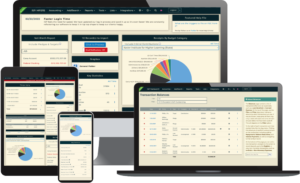The deliverability numbers of broadcast emails can be categorized into two areas: warming up the email and scrubbing the list.
Warming Up the Email
In basic terms, warming up the email means sending emails in small batches to build up a reputation and to avoid triggering spam filters. If the emails are sent out in a large blast at once with an email that is unknown it is a huge flag and will result in a lot of bounces
The email used for sending your list takes time to warm up. Having the SPF entry will help increase deliverability, but there is still a warm up period with the new email used for broadcasting. The other part of the warm up process is the broadcast servers. Those are already well warmed up, so your focus only needs to be on the email address.
Broadcast emails allow the list to not be opt in only. Warming up an email can be important as you are more likely to be starting at neutral and not have a reputation with other email servers. Warming up an email typically takes about 30 days but can take longer if engagement is low.
Broadcast Email servers recommend people on the campaign are included in the broadcast. This helps ensure it marks any emails received via the broadcast as not spam. Replying to them also increases your email reputation.
You can also try sending to smaller groups and building up the list size. We recommend sending regularly, once a week to every few days at most. This is the easiest way to build up the email reputation and deliverability over time. However, be careful with increasing broadcast and causing more people to unsubscribe or mark you as spam.
Scrubbing the List
New emails on a list in a broadcast go through a scrubbing server before being sent. This is to make sure poison pill emails and other landmines are blocked and not included in the broadcast, which could ruin the ability to send broadcast emails completely.
Initially, with a newly uploaded list, the emails are checked to see if they are valid. This process looks for responses from other email servers to indicate they exist. The warmed up broadcast email servers play into being trusted here, but not all emails or services give a response or provide a response right away.
Sometimes they are intentionally delayed or a communication error/block on the internet gets in the way. Those may result in temporary bounces initially, but those slowly go away as more broadcasts are sent and more responses are collected. When you see a high bounce rate, it likely has to do with a low or slow response from email servers. The recommended waiting period is 24 hours before resending to those that did not respond with a read receipt.






